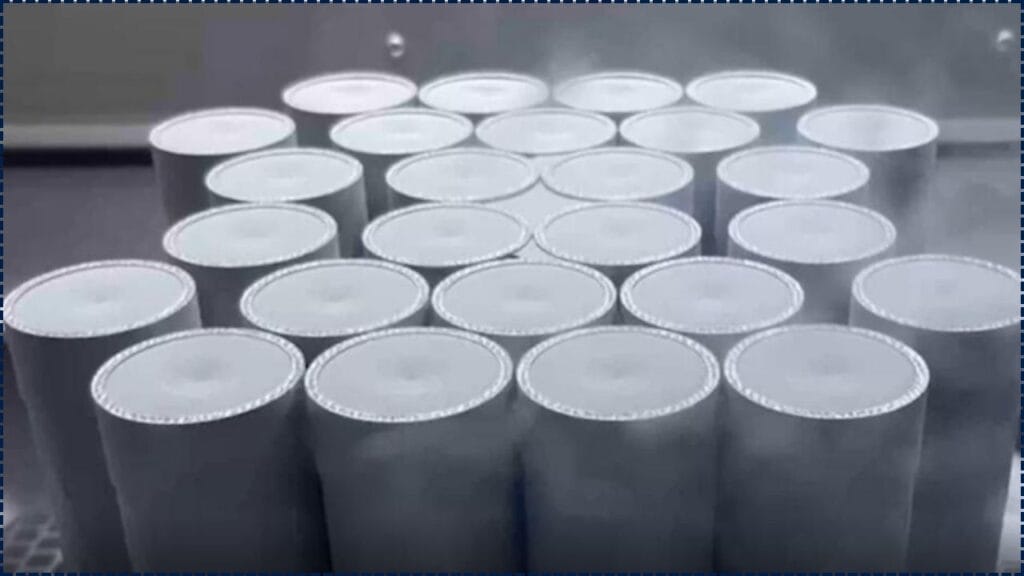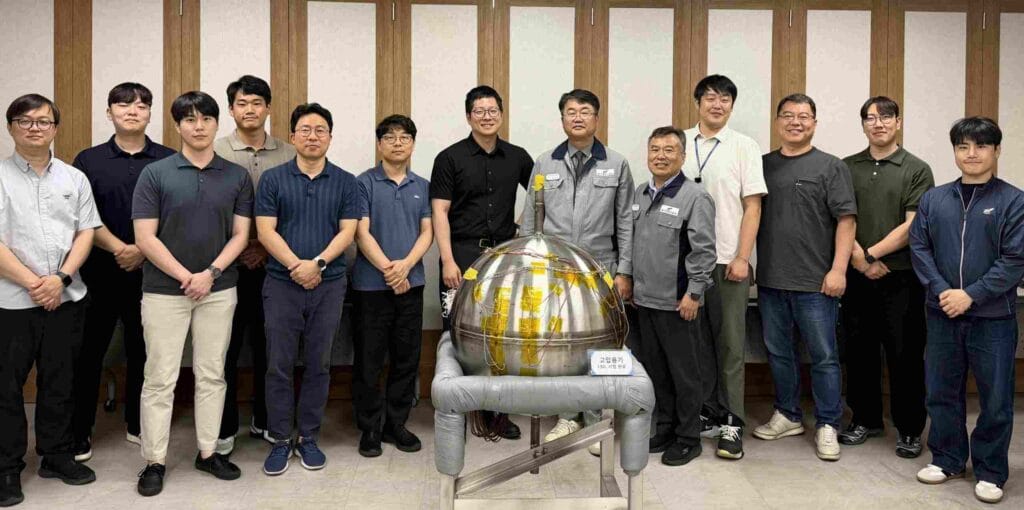In a remarkable leap for technology, Oerlikon has 3D printed 25,000 metal suppressors for military use, a heartwarming milestone for additive manufacturing. This achievement highlights the growing promise of 3D printing to create high-quality components with care and precision. Using advanced metal techniques, these suppressors offer a fast, reliable, and cost-effective solution, supporting defense needs while fostering innovation and hope for a more efficient, responsible future.

The 25,000 suppressors mark Oerlikon’s leadership in advancing metal 3D printing technologies, which are increasingly seen as game-changers for industries requiring both high-performance and cost-effective solutions. The suppressors, made from Oerlikon MetcoAdd™ nickel powder, are designed to meet the highest standards for military durability, precision, and performance.
Let’s take a deeper look into how this achievement was accomplished, the technology behind the suppressors, and the broader implications for the defense sector and beyond.
Oerlikon 3D Prints 25,000 Metal Suppressors for Defense
| Feature | Details |
|---|---|
| Milestone | Oerlikon has 3D printed 25,000 metal suppressors for the defense sector |
| Technology Used | Laser Powder Bed Fusion (PBF-LB) and Oerlikon MetcoAdd™ nickel powder |
| Material Used | MetcoAdd™ nickel powder, a material known for high durability, strength, and thermal stability |
| Production Location | Huntersville, North Carolina |
| Design Innovation | Single-piece suppressors reducing assembly complexity and offering improved performance |
| Key Safety Features | Reduced gas blowback, lower risk of carbon monoxide and lead exposure, and enhanced durability |
| Strategic Partnerships | Collaboration with 3D Systems to accelerate metal 3D printing capabilities |
| Future Investments | CHF 40 million investment in Campus Reichhold, Switzerland, to advance additive manufacturing technologies in the defense, aerospace, and automotive sectors |
Oerlikon’s achievement in 3D printing 25,000 metal suppressors marks a transformative moment for the defense industry. The company’s use of additive manufacturing demonstrates the power of modern technology in creating high-performance, cost-effective, and customized parts. As 3D printing continues to evolve, Oerlikon is leading the way, shaping the future of defense manufacturing and beyond.

The Growing Role of 3D Printing in Defense Manufacturing
History of 3D Printing in Defense
The application of 3D printing in the defense industry has come a long way since its introduction. Initially, additive manufacturing was used for prototyping and rapid development of parts. However, as technology has advanced, it is now employed in the production of final, high-performance parts used in combat, aerospace, and military defense systems.
3D printing’s ability to create complex geometries, customized designs, and integrated structures makes it ideal for manufacturing parts that would be difficult or impossible to produce with traditional methods. For example, in the case of the Oerlikon suppressors, the single-piece design minimizes the need for multiple components and fasteners, resulting in better performance and enhanced durability.
Challenges in Manufacturing Metal Components for Defense
Manufacturing metal components for the defense industry comes with significant challenges. These parts must meet extremely high standards for strength, precision, and reliability under stressful conditions. Whether it’s a suppressor or an aircraft part, these components need to perform flawlessly in environments ranging from combat zones to extreme altitudes or temperatures.
3D printing helps overcome many of these challenges. By allowing for the production of complex internal structures and lightweight designs, additive manufacturing enables the creation of parts that are both strong and efficient. The ability to rapidly iterate designs and create customized solutions has also greatly sped up the development process.
Advantages of 3D Printing in Defense
Cost-Effective and Efficient
One of the primary reasons defense contractors are embracing 3D printing is its cost-effectiveness and efficiency. Traditional methods of manufacturing, such as casting or machining, require costly tools, molds, and assembly lines. 3D printing, on the other hand, uses digital models to create parts layer by layer, eliminating the need for extensive tooling and reducing material waste.
For example, traditional suppressors may require multiple parts to be assembled, each requiring its own manufacturing process. With 3D printing, Oerlikon can produce a single-piece suppressor, reducing production time and minimizing costs associated with complex assemblies.
Customization and Precision
The flexibility of 3D printing means that parts can be customized and optimized for specific requirements, such as the performance needs of the military. With 3D printing, manufacturers can make changes to designs in real-time without having to start the process from scratch. This is especially important in industries like defense, where precision and reliability are critical.
Oerlikon’s 3D-printed suppressors, for example, are designed to minimize backpressure, reduce exposure to harmful gases, and increase overall performance—features that would be difficult to achieve using traditional manufacturing methods.
Environmental and Economic Benefits of 3D Printing
Reducing Waste and Enhancing Sustainability
In addition to reducing production costs, 3D printing is also more environmentally friendly compared to traditional manufacturing techniques. Traditional methods often involve cutting away large portions of material to shape a part, resulting in significant material waste. With additive manufacturing, material is used only where needed, making it a more sustainable option.
Moreover, the reduced need for complex tooling and molds also leads to fewer resources being consumed during production. As the defense industry looks to become more sustainable, 3D printing offers a viable solution that minimizes both costs and environmental impact.
Boosting the Economy
As the use of 3D printing in defense continues to expand, it opens up new economic opportunities. The ability to produce parts locally rather than relying on overseas suppliers can reduce lead times and shipping costs. Additionally, 3D printing can help streamline military production lines, ultimately reducing costs for taxpayers.
Oerlikon’s Leadership in Additive Manufacturing
Oerlikon’s Competitive Edge
Oerlikon has long been a pioneer in the additive manufacturing field. The company’s focus on developing high-quality materials for 3D printing has made it a leader in the metal 3D printing market, especially for defense applications. With its expertise in surface engineering and thermal spray coatings, Oerlikon is able to create high-performance parts that meet the extreme conditions required for military use.
The company’s success in 3D printing 25,000 suppressors is a testament to its ability to deliver both quality and efficiency on a massive scale. This milestone further solidifies Oerlikon’s role as a key player in defense technology.
Related Links
Most Valuable Elements in the World That Surpass Gold in Price
Japan Reveals Futuristic Supercar Featuring AI and Modern Design
Future Applications of 3D Printing in Defense and Other Industries
Expanding the Role of 3D Printing in Defense
While 3D printing has already revolutionized certain aspects of defense manufacturing, its potential applications in the sector are still being explored. Future advancements in 3D printing could lead to fully functional military vehicles, weapon systems, and even ammunition being produced using additive manufacturing.
Additionally, the technology could be used to develop rapid prototyping and on-demand manufacturing for military parts in remote locations, potentially transforming how the military handles parts shortages in the field.
Cross-Industry Applications
Beyond defense, 3D printing has broad applications in industries such as aerospace, automotive, healthcare, and construction. For instance, aerospace manufacturers are already using 3D printing to create lightweight components, and healthcare is experimenting with 3D-printed prosthetics. As the technology continues to evolve, its potential in these industries will expand, driving further innovation.
FAQs
1. What is Oerlikon’s role in 3D printing for defense?
Oerlikon is a leader in metal additive manufacturing, producing high-performance parts like 3D-printed suppressors for military applications.
2. Why is 3D printing used for making suppressors?
3D printing allows for the creation of single-piece suppressors, reducing assembly complexity and improving performance and durability compared to traditional methods.
3. How does 3D printing benefit military applications?
3D printing offers faster production, customization, cost savings, and the ability to create highly complex and optimized designs for military use.
4. What materials are used in Oerlikon’s 3D-printed suppressors?
Oerlikon uses MetcoAdd™ nickel powder, which offers high thermal stability, strength, and reliability.
5. What is Oerlikon’s future investment in Campus Reichhold?
Oerlikon is investing CHF 40 million to create a new innovation and production hub in Switzerland.








